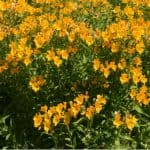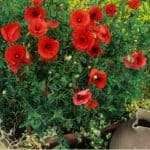Last updated on May 5th, 2022
Our site is reader supported, this means we may earn a small commission from Amazon and other affiliates when you buy through links on our site.
Poppy is a very common name for the plants that fall under the genus Papaver. Poppies can come in many forms including annuals, biennials, and perennials. They have summer flowers that don’t usually last very long, but they’re big and beautiful and make a wonderful display for May and June when they appear.
You can even find larger, orientale styles that have hairy foliage with ruffled, crimped, even shaggy design flower petals. These are very different from the standard Poppies we think of today. The colours range from reds to pinks to whites, and no matter the variety you pick, the flowers typically measure around 15cm for the orientale varieties.
Where to plant Poppies
If you decide you want to grow Poppies in your garden, you need to find the perfect soil conditions. Poppies are pretty happy whether you have neutral, acid, or alkaline soil but they do need something that is well-draining where they receive a lot of sun.
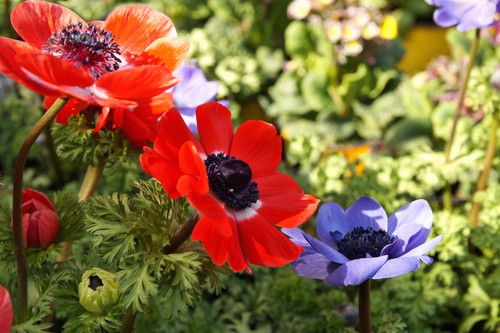
Perennial Poppies
If you are growing the larger orientale Poppies, these tend to be perennials and they flower in May and June. Sometimes they have a second batch of flowers that appear in August. They do well when planted alongside other perennials that are low growing because the low growing foliage will help fill in the gap when the foliage on your Poppies dies back.
Annual Poppies are best grown in wildflower beds
If you are growing the annual poppies you can plant them in an open, sunny area. These Poppies work really well in wildflower mixtures because you can simply throw the seeds onto a well-prepared soil and then prevent the birds from eating away at the freshly germinating plants, and beyond that, you need to do very little.
They DO NOT grow as well in containers as they do in the ground
Unlike most other plants that can be grown in containers, Poppies do not perform as well when they are growing in pots so it’s better to grow them in your garden if you can. That being said, if you have no choice you can still grow them in containers.
Learn how to grow Poppies in pots (if you have no other option) here
How to plant Poppies
Planting
If you have the perennial varieties you should plant them at the front of a border garden or in the middle. The best time to plant them is during spring as they start to grow again. Prepare the hole by digging one that is the appropriate size and adding some well-rotted organic compost and mixing it into the soil.
Remove your (purchased) Poppies from their pots and place them in the hole. Make sure that they are placed to the same depth in the new space as they were in the container. Backfill the area and firmly pat down the soil and then water it well.
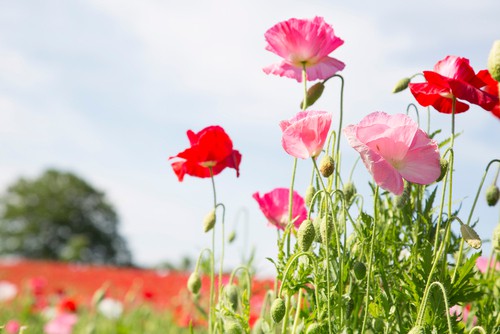
Sowing annual Poppies from seed
If you are growing an annual or a biennial Poppy, it’s better to grow these from seed and you can put the seeds directly onto the well-prepared soil at the beginning of spring, the beginning of summer, or autumn based on when they flower and where you want them to flower.
Make sure that before you place the seeds in the area you remove any weeds, then scatter the seeds across the space and water it with a fine spray to prevent the very small seeds from being washed away.
Learn how and when to collect Poppy seeds so you can sow annual poppies every year for free
Plant purple Poppies in light shade
If you are growing purple Poppies, for example, Papaver ‘Plum Pudding’, you need to put them in an area with light shade. In full sun their flowers fade. You’ll know if you have a purple Poppy variety.
How to care for Poppies
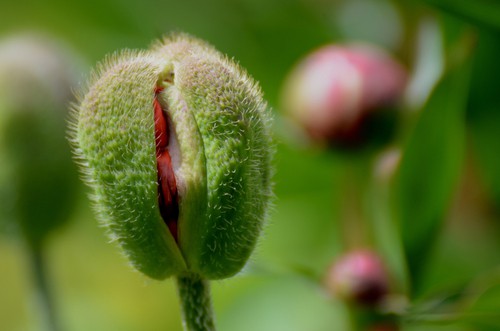
Annuals
If you have annual Poppies, they’re pretty simple to care for. After the flowers have faded and the seeds have been released, simply pull up the parent plants and compost them in your compost bin. Of course, you can shake the plants over the area to get rid of any stubborn seeds if you want to cultivate more plants the following year.
Orientale Poppies
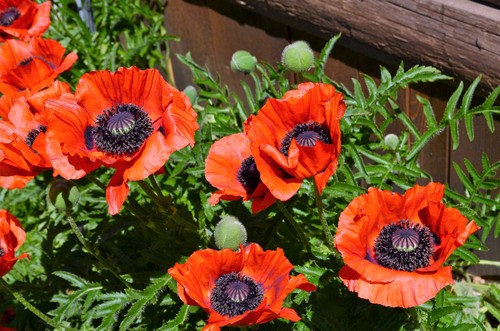
For Orientale Poppies, you want to help the plants by supporting the strong stems. The Poppy flowers will last for about 10 days in good weather but you will need to cut the plant back if you want that second flush of flowers.
If you allow the plant to turn to seed, after that first flush of flowers, it won’t have enough energy to make the second flush. So this comes down to what you prefer. If you only want one flush, you can leave it and allow it to convert to seed but if you want the second flush, you can deadhead after the first. Once that is done you want to cut it back to ground level in autumn.
Pests and Diseases
Poppies are great because they very rarely suffer from any pest problems or diseases.
Powdery mildew
One of the things you will need to look out for though is powdery mildew on the oriental varieties. Powdery mildew is a fungal disease that can affect the entire plant.
You might notice that the leaves or the stems on your oriental varieties are covered in white mildew in the spring or summer. You want to remove the areas and treat the rest of the plant in mild cases with a fungicide, but in severe cases, you might have to cut your plant back to ground level and clear away anything that has the mildew on it to prevent it from hanging out in the soil over winter and coming back again the following year.
Propagating
Propagating annuals
If you have Poppies, remember that the seeds can remain in the soil for decades and they might lie dormant for years before they germinate. If you want to avoid this you have to make sure that you deadhead your annual flowers after flowering every year so that the seeds don’t end up in your garden. However, if you want to continue propagation via seed, simply don’t remove the plants and allow the dying flowers to convert into seeds.
Propagating orientale varieties
If you are propagating orientale varieties you want to use root basal cuttings instead of seeds and this is a process you should do in autumn or spring.
Carefully remove a mature plant and take a cutting off with some of the root attached that is no thicker than a pencil. Never remove more than one-third of the roots from the parent plant. They should be cut into lengths that are 4 cm each. You can lay them vertically into a pot of compost but leave the thickest end sticking out of the pot, not in the compost. These should be kept in a cold frame and you should wait until you see the small plants forming before you move them outside.
Some of our favourite varieties
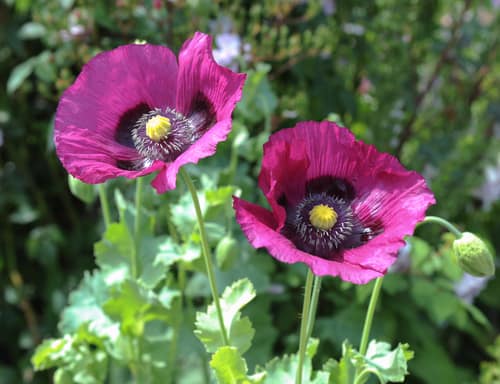
Some of the best varieties to grow if you want a perennial that is orientale is the Papaver ‘Perry’s White’. This has large white flowers, each of which has black markings at the base. It grows to a height of 90cm.
There are also many other to choose from including Papaver orientale ‘Beauty of Livermere’, Papaver orientale ‘Patty’s Plum’, Papaver orientale ‘Turkenlouis’ and Papaver orientale ‘Manhattan’.
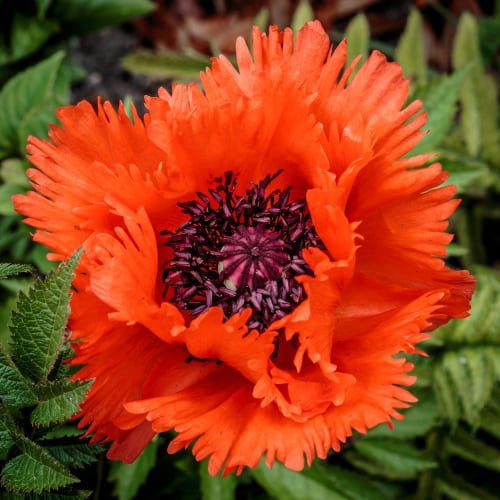
If you prefer an annual Poppies, the Papaver rhoeas has delicate red flowers that are produced in June and July. These are the common Poppy you see as a symbol of remembrance. Their seeds will lie dormant in your soil for decades to come.
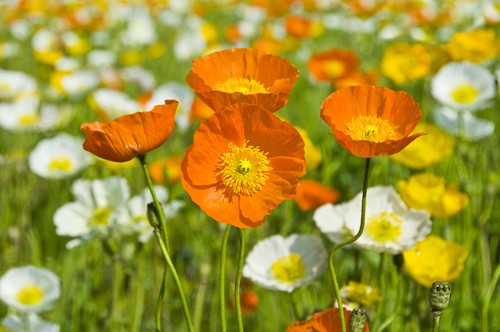
If you prefer a biennial, the Papaver Nudicaule is a mixture that produces red, orange, and yellow flowers from June to August. It’s commonly referred to as the Icelandic Poppy and reaches a height of 50cm.

